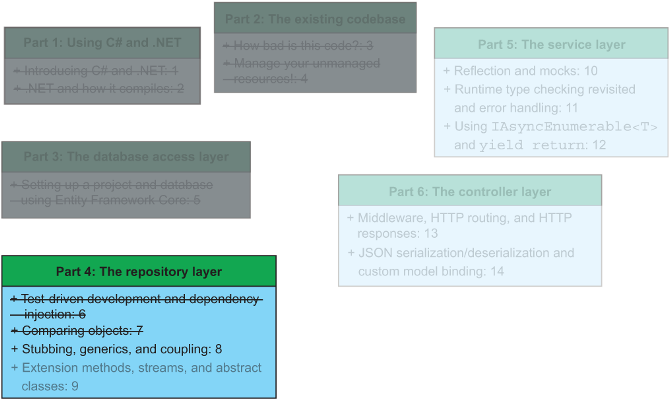chapter eight
This chapter sees the continuation of our short-term mission to implement repositories for every entity in the database. If we look at the larger picture, we can remind ourselves why we implement these repositories in the first place: Aljen van der Meulen, the CEO of Flying Dutchman Airlines, wants us to bring their old codebase into the modern era. We received an OpenAPI specification to adhere to (the service needs to integrate with a flight search aggregator), and we settled on using the repository/service pattern in our new codebase. Figure 8.1 shows where we are in the scheme of the book.
Figure 8.1 In this chapter, we’ll implement the BookingRepository class. In chapters 6 and 7, we implemented the CustomerRepository class. That just leaves the AirportRepository and FlightRepository classes for the repository section of our codebase. We’ll implement those in the next chapter.
